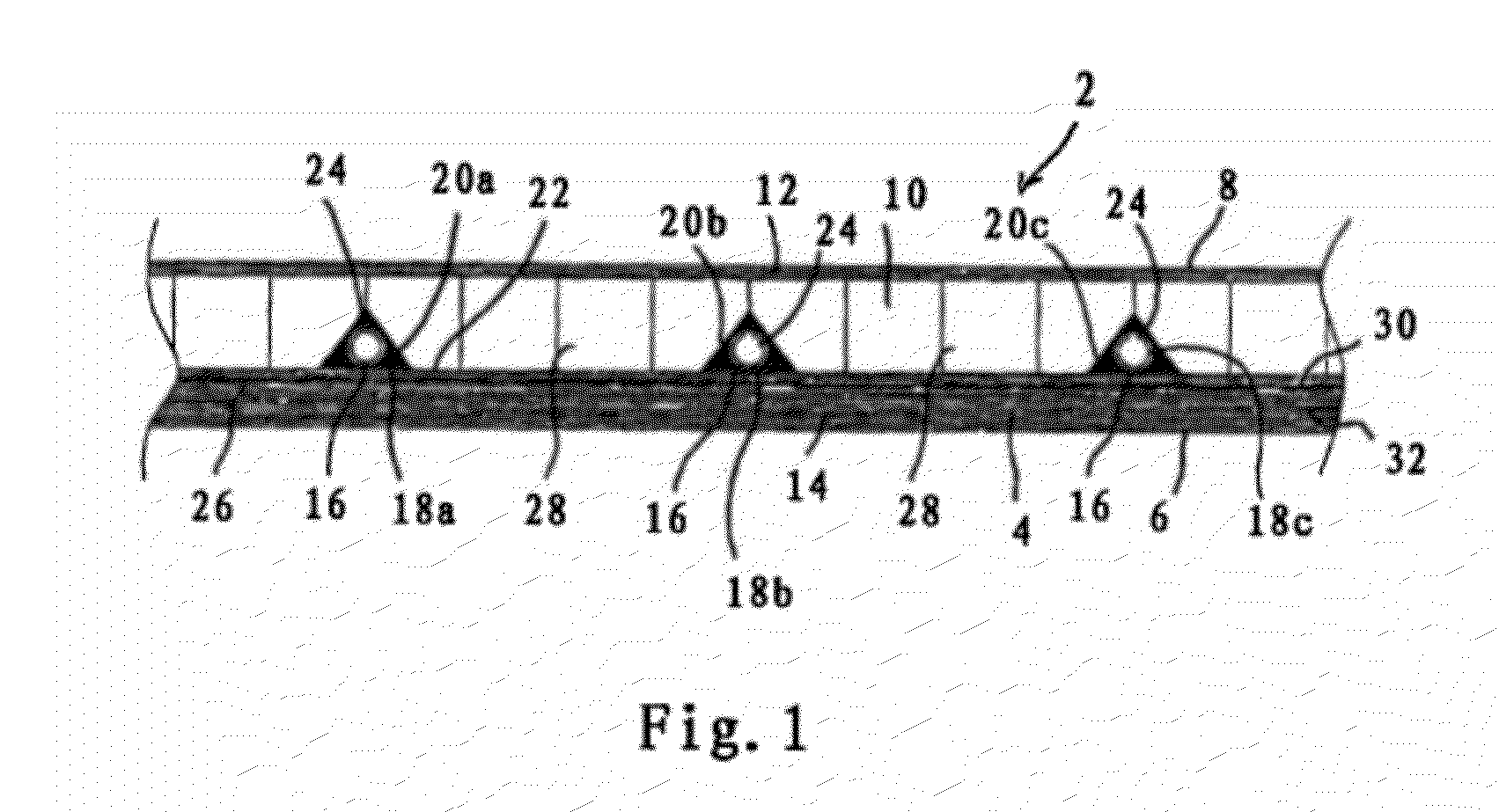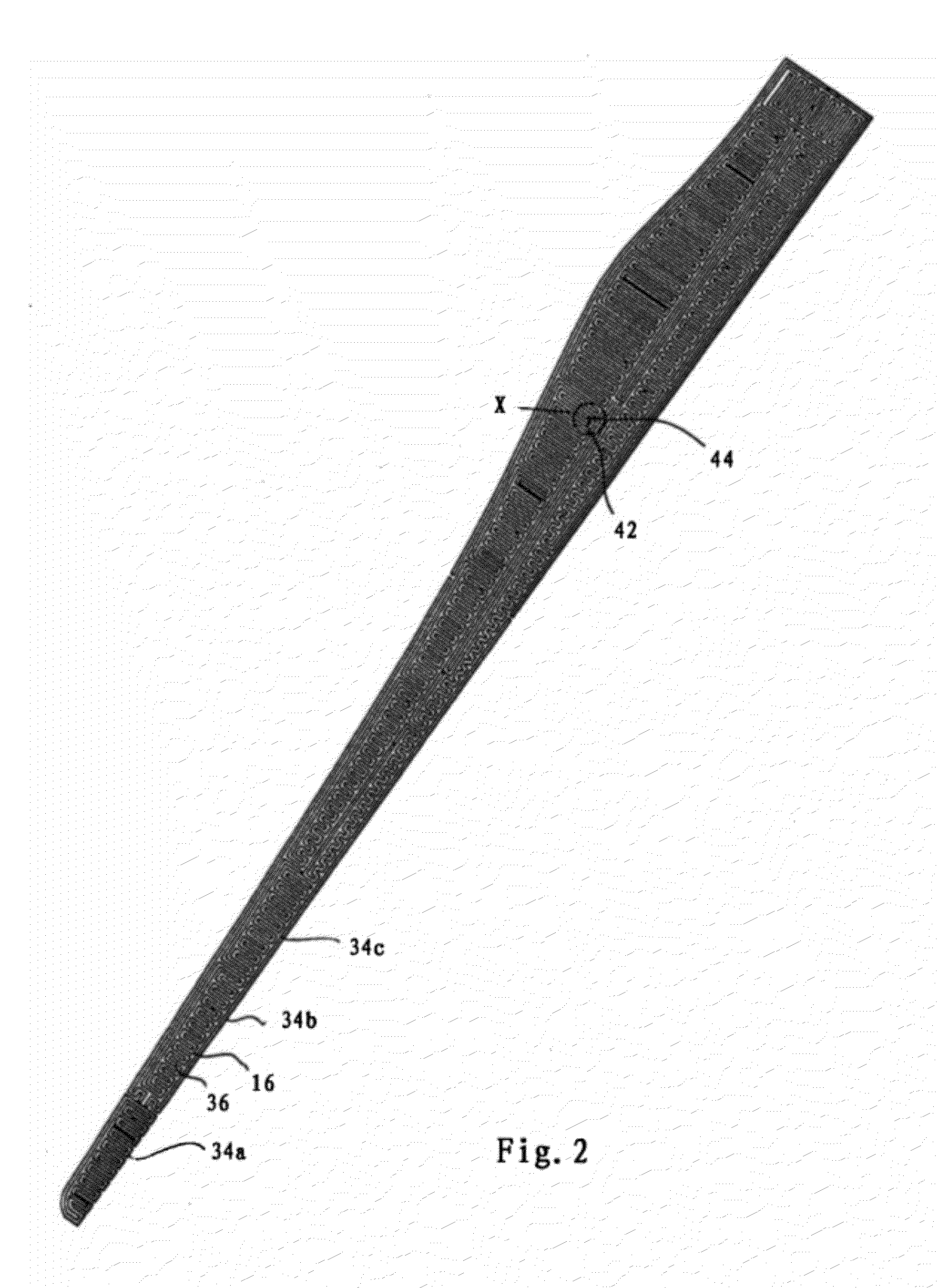Wind blade mould including a heating system
- Summary
- Abstract
- Description
- Claims
- Application Information
AI Technical Summary
Benefits of technology
Problems solved by technology
Method used
Image
Examples
Embodiment Construction
[0053]Referring the Figures, there is shown a mould 2 for moulding a wind turbine blade according to an embodiment of the present invention. FIG. 1 is a schematic cross-section through a part of the mould 2.
[0054]The mould 2 comprises a mould body 4 having a front moulding surface 6 and a rear face 8. The mould body 4 comprises a sandwich construction having a central core layer 10 between rear and front layers 12, 14. The core layer 10 is composed of a lightweight material selected from polymeric foam, for example composed of polyethylene terephthalate, or balsa wood. Typically, the core layer 10 is from 6 to 50 mm thick.
[0055]The rear and front layers 12, 14 are composed of a fiber reinforced resin matrix composite material. The mould of the present invention is not specific with regard to the type of fiber reinforced composite material used for the mould. All mould materials which are known in the art as being typical for the manufacture of polymeric moulds may be employed. The m...
PUM
| Property | Measurement | Unit |
|---|---|---|
| Length | aaaaa | aaaaa |
| Length | aaaaa | aaaaa |
| Thickness | aaaaa | aaaaa |
Abstract
Description
Claims
Application Information
 Login to View More
Login to View More - R&D
- Intellectual Property
- Life Sciences
- Materials
- Tech Scout
- Unparalleled Data Quality
- Higher Quality Content
- 60% Fewer Hallucinations
Browse by: Latest US Patents, China's latest patents, Technical Efficacy Thesaurus, Application Domain, Technology Topic, Popular Technical Reports.
© 2025 PatSnap. All rights reserved.Legal|Privacy policy|Modern Slavery Act Transparency Statement|Sitemap|About US| Contact US: help@patsnap.com



